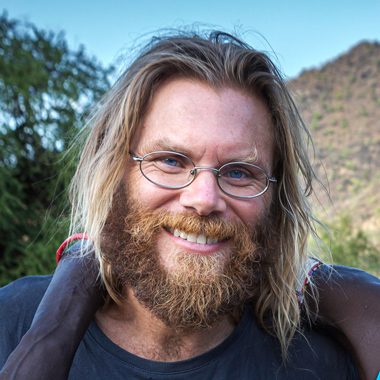The Baiga are a forest-dwelling indigenous tribal community in eight states of central India. In the local mythologies, they are often recognized as the original inhabitants of the Earth. Identified as a primitive Dravidian tribe, the Baiga are known for their traditionally minimalistic ways of life. They lived in intimacy with the elements of nature, and even at present, their everyday lives and livelihoods continue to be closely intertwined with their forest.
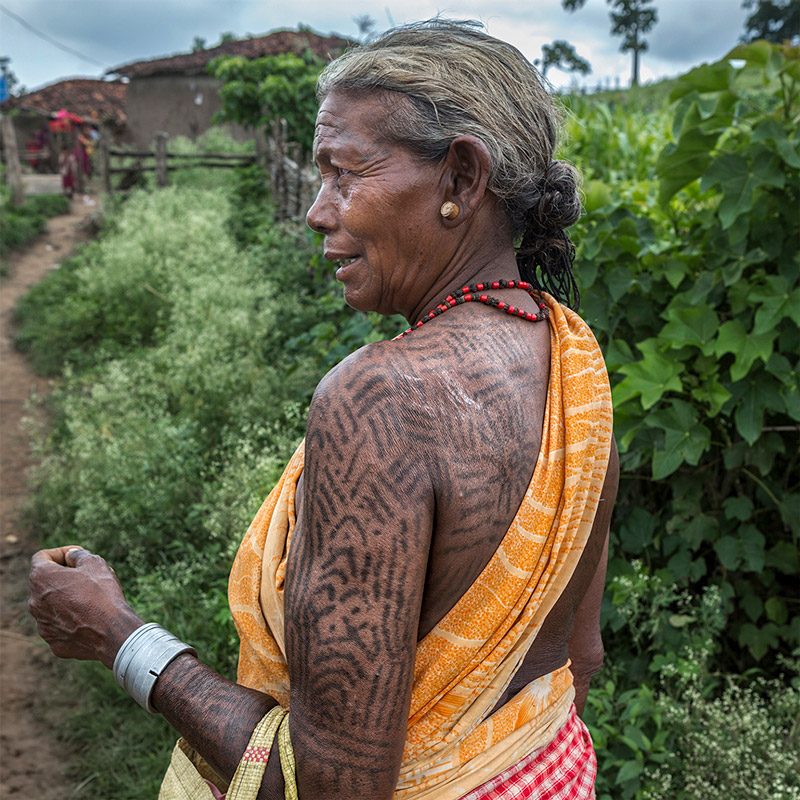
Baiga tattoo
The tattoo is a distinctive and identifying element of the Baiga culture. Only women can get tattoos, and it serves to enhance their beauty and improve their social position. Girls are tattooed on their forehead when they are five years old, and when they get married, they can get tattoos on the rest of their body. The 'godnaharin' are the women tattoo artists and those who prepare the ink with local products. Men are not allowed to witness the tattoo process.
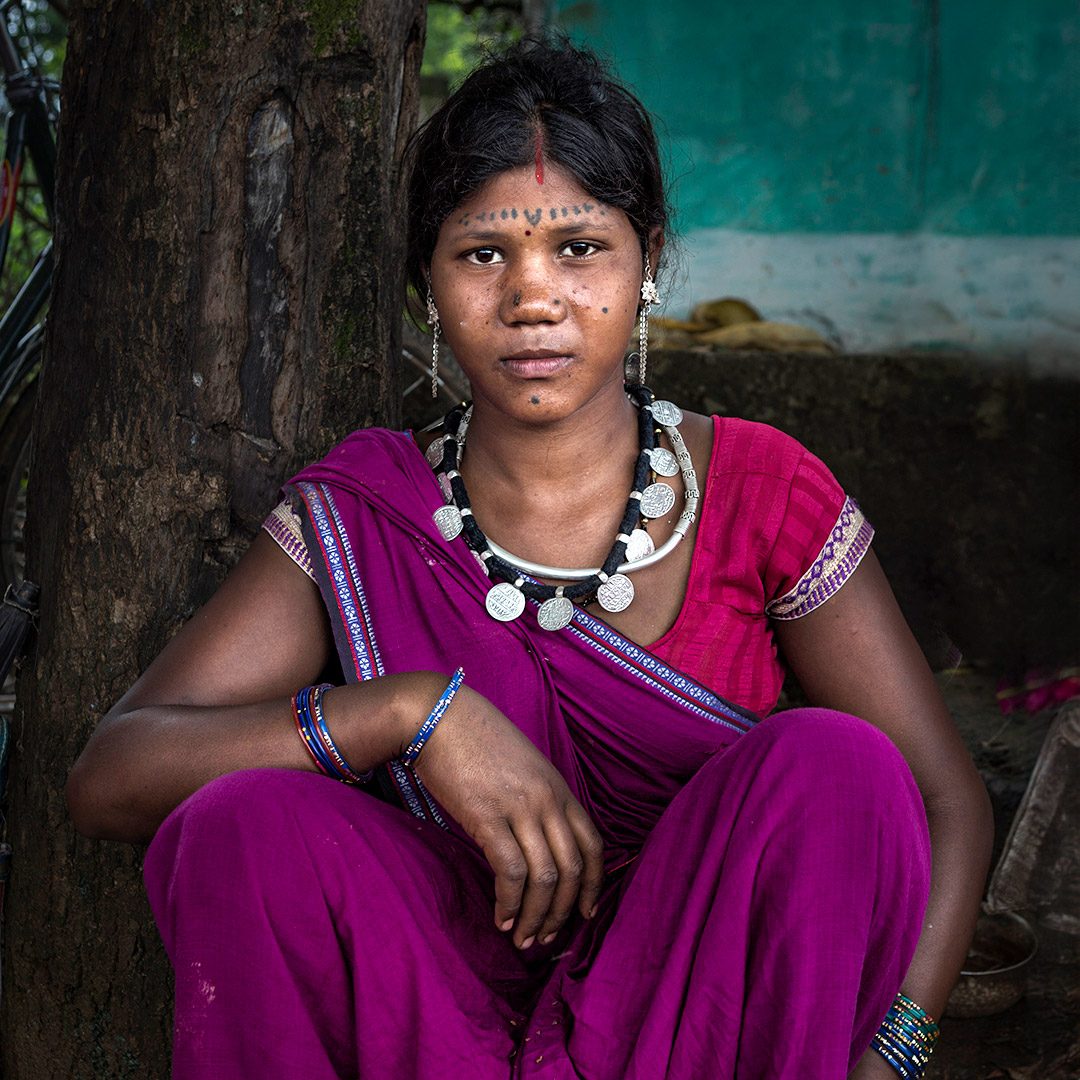
Belief system
The Baiga tribe has usually had a symbiotic relationship with its environment. Thanks to the forests, the Baiga can cover their daily needs, and for this reason, they revere and respect it. Therefore, it is natural that most of its numerous deities and festivals are connected with nature. The 'dewar' or Baiga priests are in charge of officiating rites and ceremonies and practicing divination, magic or sorcery.
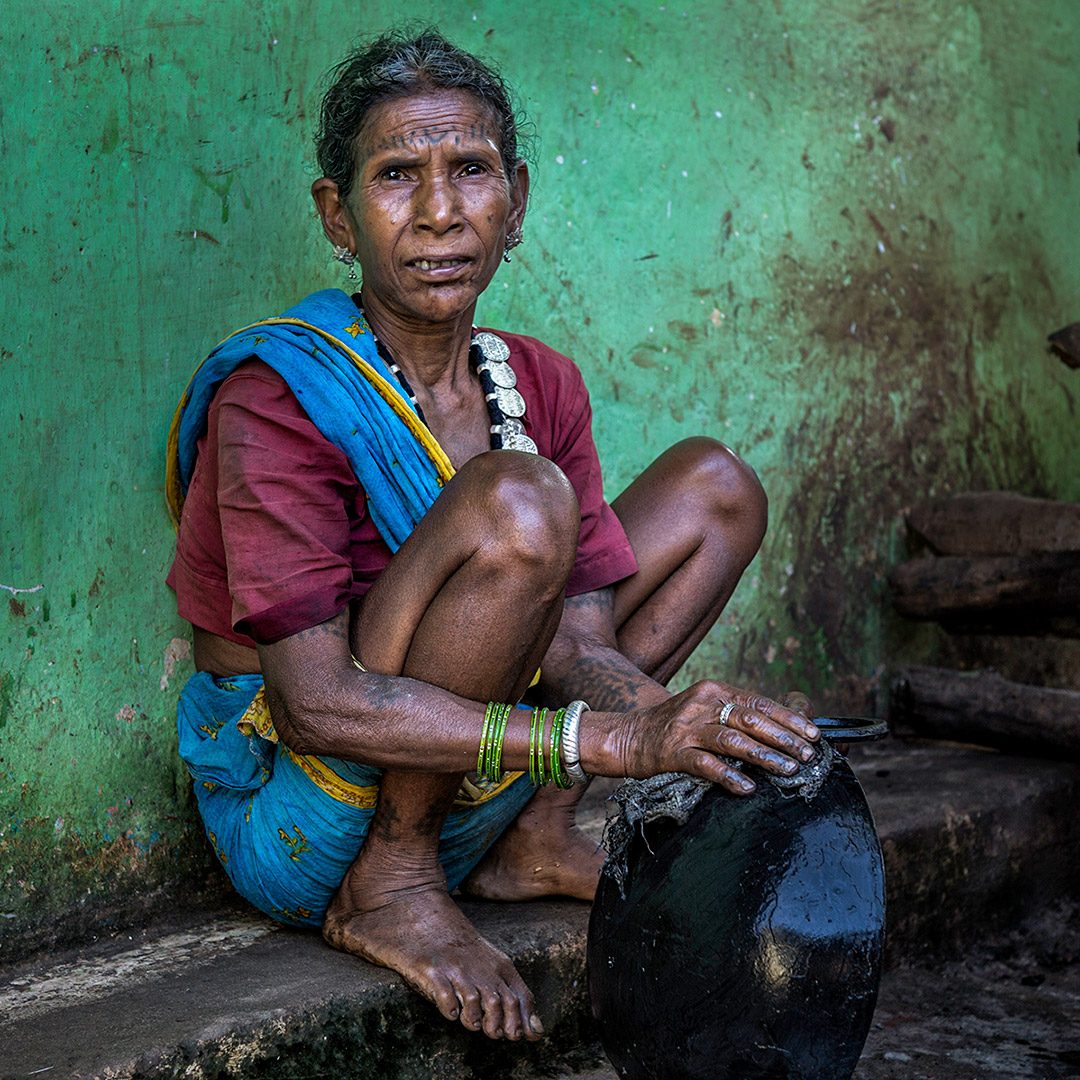
Do you want to meet the Baiga people?
Join Bego Colmeiro on his next trip to India from 4 to 18 December 2024, during which you will have the opportunity to meet the Baiga tribe. Click here for all the details of the trip.
In our Orissa tribal trip, we first meet the Baiga to learn about their culture, admire their unique body tattoos, and meet the problems they face in modern India. The Baiga were essentially forest dwellers, living deep in the jungles in harmony with nature. However, over the years, deforestation and the march of development have ensured that they migrate to places nearer the cities. We believe responsible tourism can bring pride to these long-forgotten people, help them promote their tribal culture, and give them a space in the fast-changing Indian society.
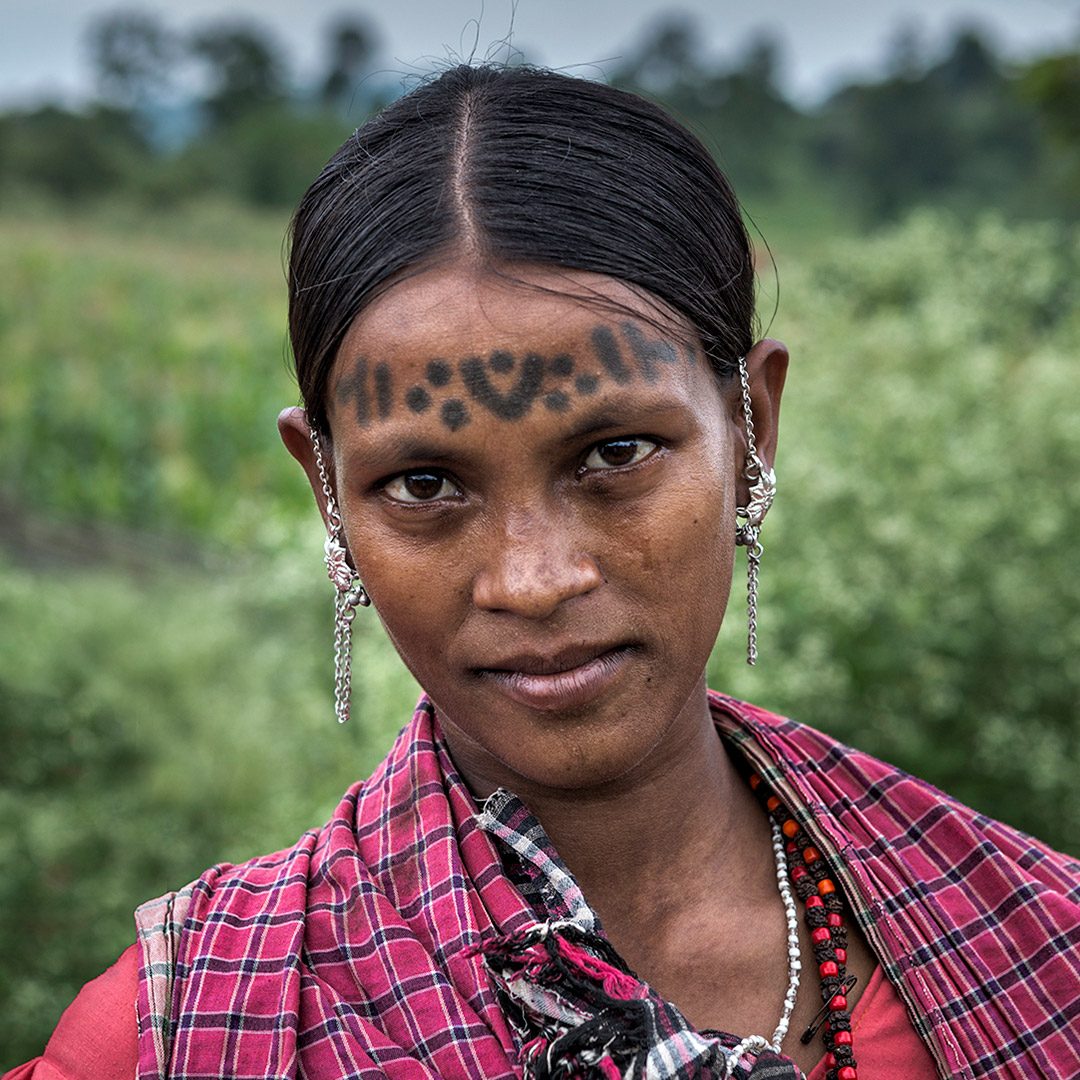
Economy
The Baiga tribe practices a shifting cultivation, called 'bewar' or 'dahiya'. The Baiga do not plow the land because they say it would be a sin to scratch the breast of their Mother. They could never ask their Mother to produce food from the same patch of earth time and time again.
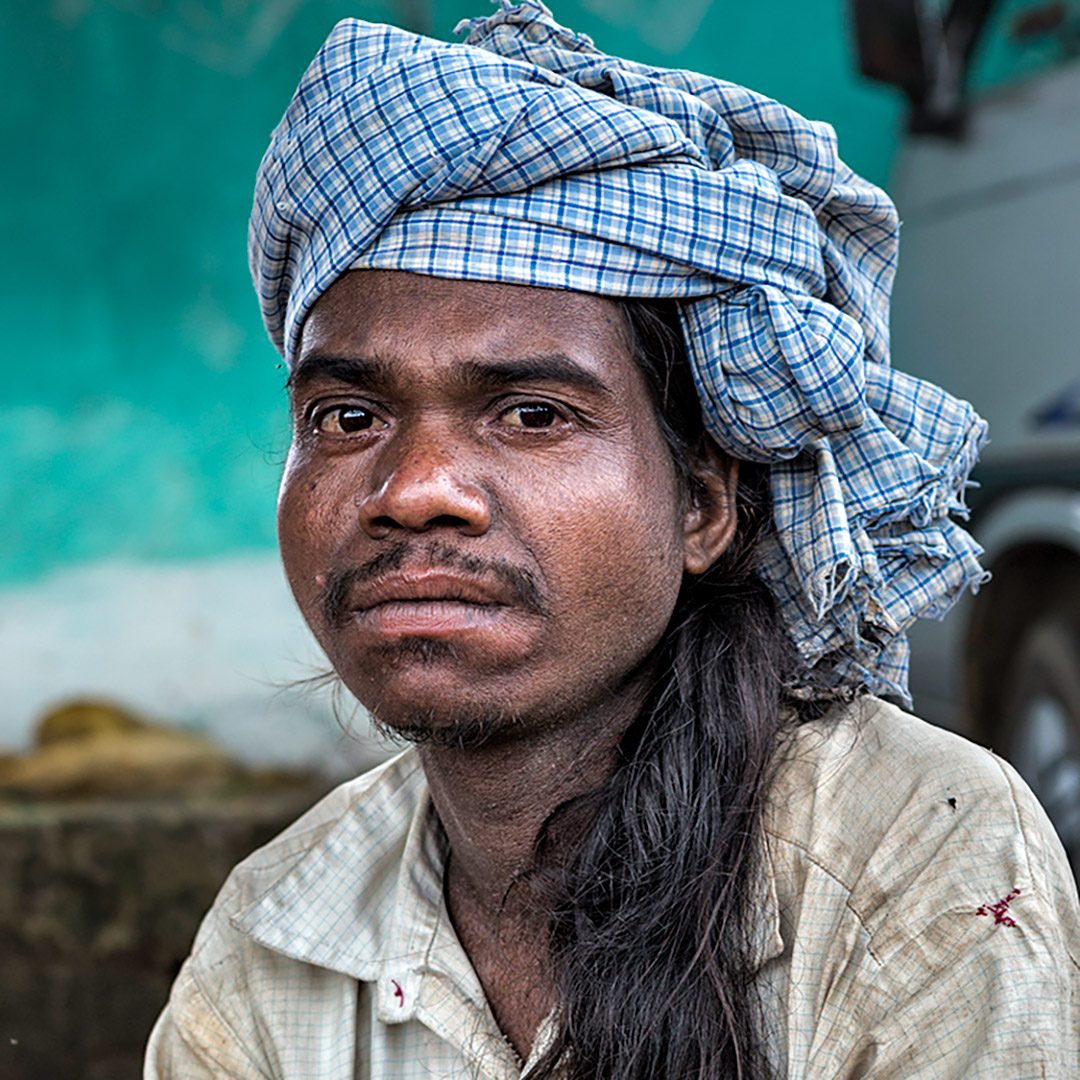
Aesthetic
Traditionally, Baiga dressed scantily, and their orthodox practice was to wear as little as possible. It is believed that the Nanga Baiga (the first Baiga man) was gifted a piece of cloth measuring nine hands in length by God, but he returned all of it but a hand and a half that was necessary.
Short dhotis above the knees and sleeveless waistcoats are sported by many Baiga men. In recent times, western clothes are commonly worn by men and saris by women. Some Baiga men still sport long hair tied into elegant knots. The Baiga girls and women wear necklaces and ornaments made of colorful beads and coins, silver and aluminum bracelets and armlets, and bangles.
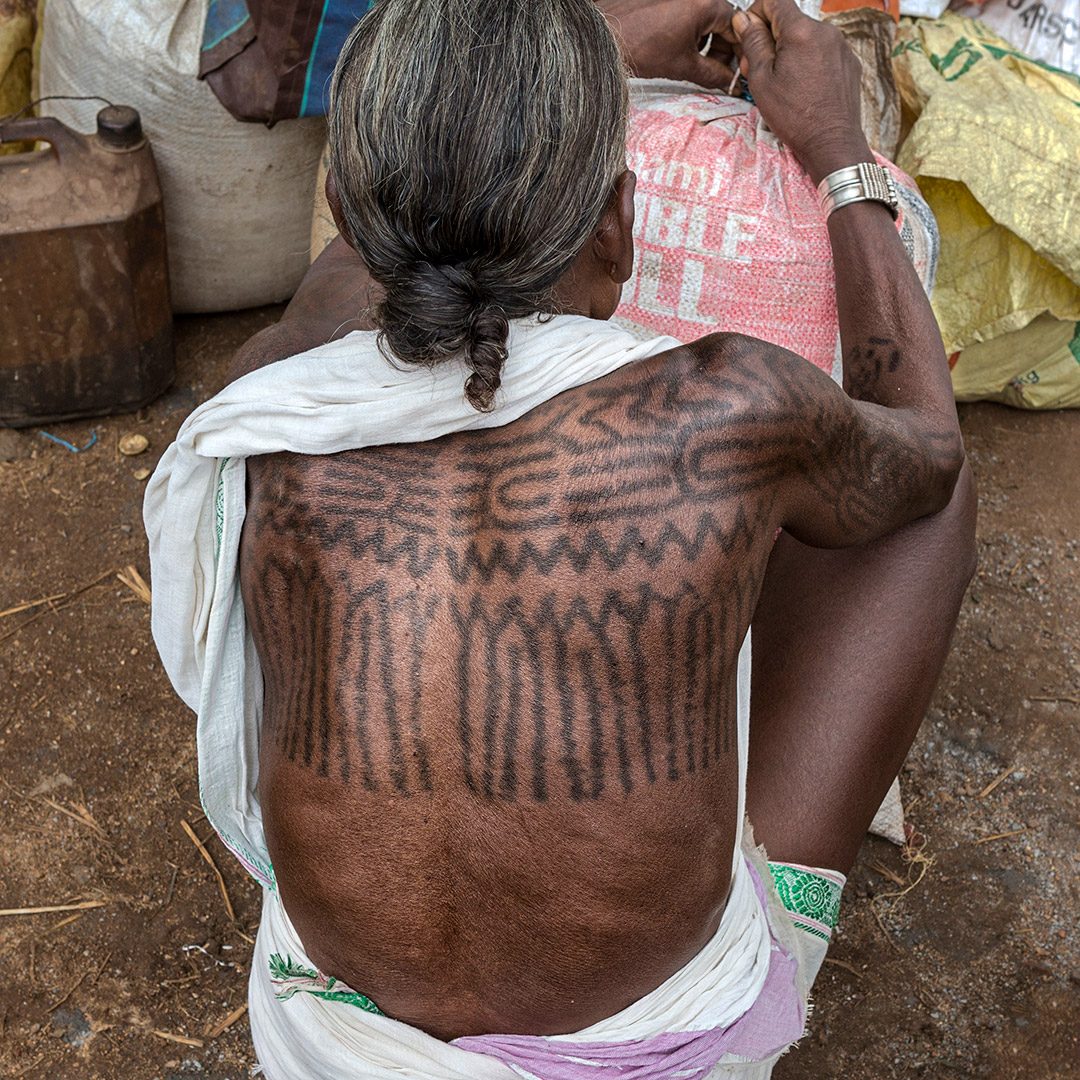
Architecture
In the old Baiga villages, all the houses were built around a central empty space; that means, all the houses had a combined ‘kharna’ or courtyard. In the middle of this courtyard, a fire was lit in the evening.
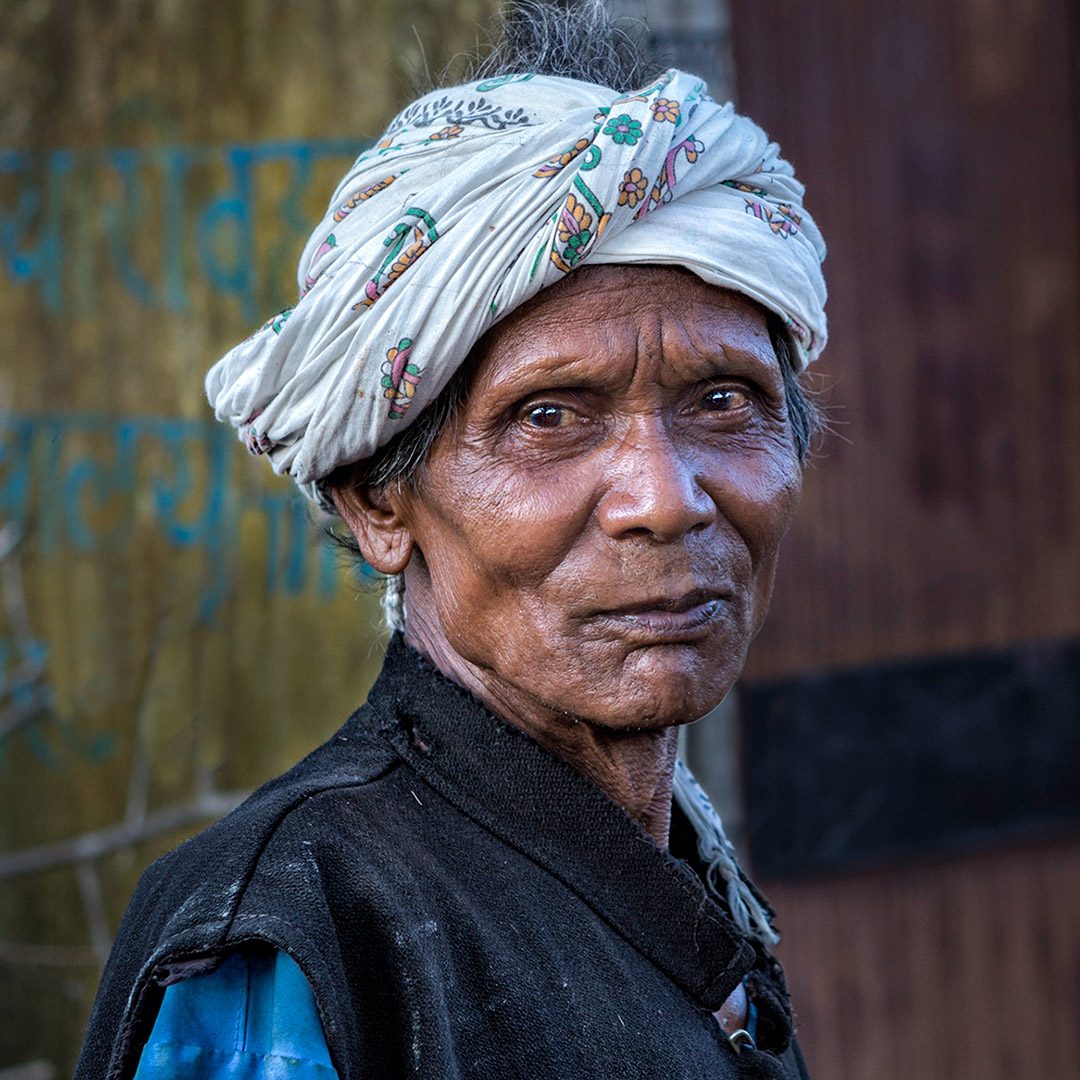
© Photos by Ana Robles taken during a trip to India.
